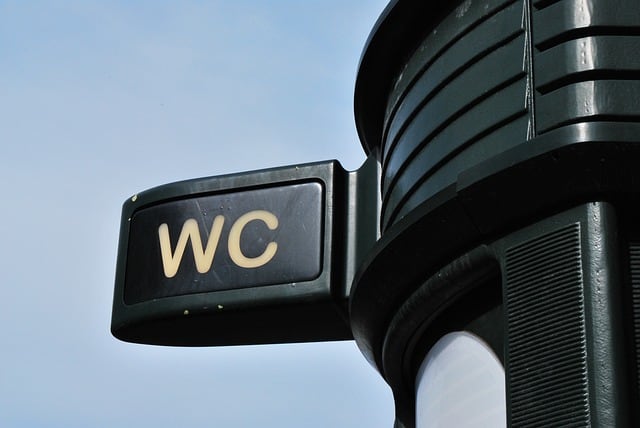Why Do You Have To Pay To Use Public European Toilets? Explained
European toilets are notorious for requiring payment, which can surprise visitors from other parts of the world. Some travelers may wonder why they must pay to use a public toilet when they already pay for additional services, such as transportation or admission to a tourist attraction. So if you are ever in another city in mainland Europe, remember to bring money when visiting a toilet. Another answer lies in the cost of maintenance and upkeep and the desire to keep the facilities clean and well-maintained.
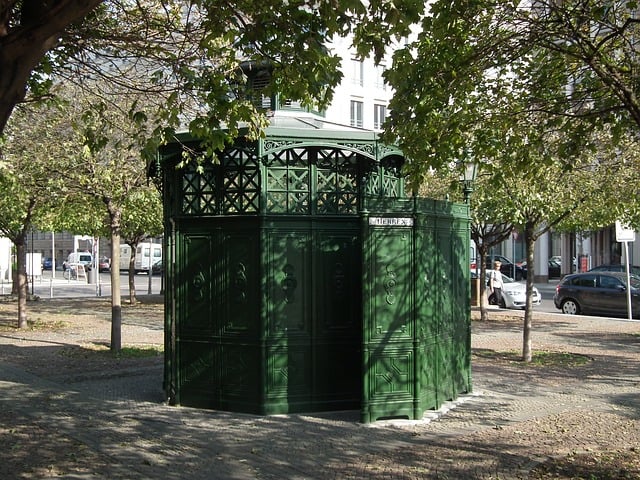
This post may contain affiliate links. Please read our disclosure and privacy policy for more information.
In many European countries, public toilets are not subsidized by the government but are instead operated by private companies or individuals. These operators must cover the costs of construction, maintenance, and cleaning, as well as any associated fees, such as water and electricity. They can recoup some of these costs and keep the facilities in good condition by charging a fee for use. Additionally, charging a fee can help discourage facility misuse, such as vandalism or excessive use of toilet paper.
Historical Context of Public Restrooms in Europe
Public restrooms have been a part of European culture for centuries. The earliest known public toilets in Europe were built by the Romans, who constructed public latrines throughout their empire. These latrines were often communal, with multiple people using them simultaneously.
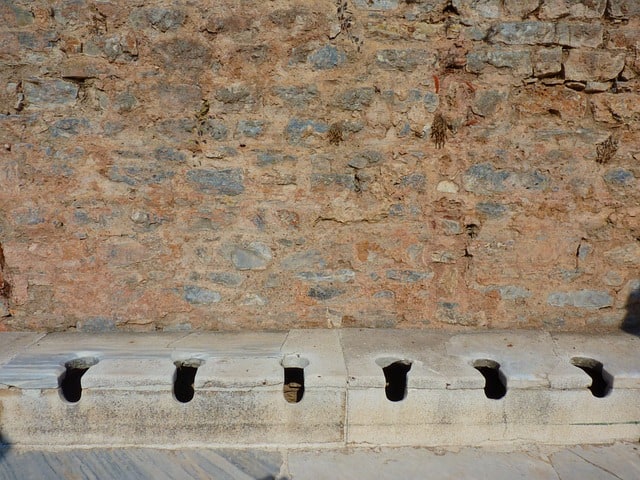
As time went on, the design and construction of public restrooms evolved. In the Middle Ages, public toilets were often located in the basements of buildings and were connected to underground sewage systems. If you are interested, York is an excellent place to visit. Speaking about the Middle Ages, public toilets became more ornate during the Renaissance and were usually found in public squares or parks.
If you are interested in the history of the Middle Ages, I would visit York.
The concept of charging for the use of public toilets in Europe can be traced back almost 2000 years to the first century BCE. Pay toilets were common in the United States until the 1970s, when the Committee to End Pay Toilets in America was founded by a group of college students to end pay toilets. However, pay toilets remain common in Europe today.
In many European countries, public toilets are maintained by private companies that charge a fee for their use. These fees are used to pay for the upkeep of the facilities, including cleaning and repairs. Some countries, such as Germany, have a system where users pay a small fee to use the restroom but receive a voucher that can be redeemed for a purchase at a nearby store.
Overall, the history of public restrooms in Europe is long and varied. From the communal latrines of ancient Rome to the modern pay-per-use toilets of today, public restrooms have played an essential role in European culture and society.
Cultural Attitudes Towards Public Amenities
One of the reasons why public toilets in Europe are not accessible is how people think about public amenities. In many European countries, public toilets are seen as a luxury and a privilege rather than a basic necessity. They are seen as a place of self-care and calm. As a result, they are often well-maintained and equipped with modern facilities, but they also come with a cost.
For example, in Germany, private companies often operate public toilets, which charge a fee for their use. This is because Germans value cleanliness and hygiene, believing that public toilets should be of a high standard.
Similarly, in France, public toilets are often located in cafes and restaurants, and customers are expected to purchase to use them. When I was in Paris, I made the mistake of just walking in to use the toilets, and on my way out, everyone in the cafe gave me a dirty look. So if you will use the public bathrooms, buy something first. This is because the French view public toilets as a service, believing charging a fee for their use is reasonable.
Here’s an example of 2theloo, a company that manages paid European toilets. This example is in a public gas station, costing 0.80E per person.
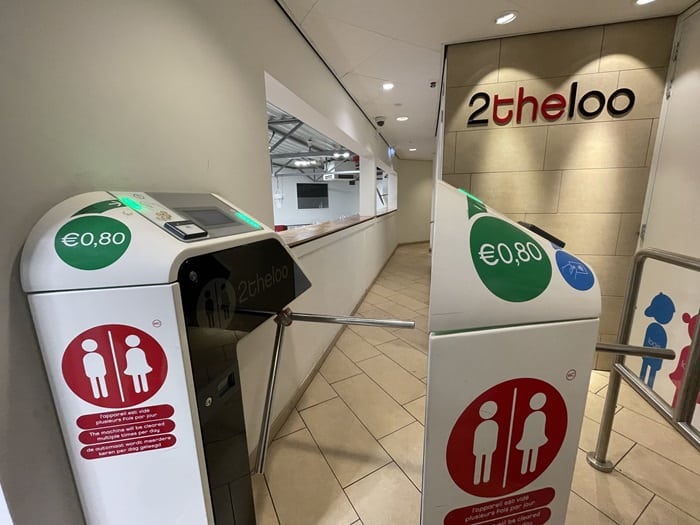
This unique way of managing toilets is not a mainland European thing, but a mainland European thing, so don’t go to the Greek islands expecting luxury toilets.
In contrast, in many other parts of the world, public toilets are seen as a basic necessity and are often provided free of charge. This is because public toilets are viewed as a public service, and it is believed that everyone should have access to them, regardless of their ability to pay. For example, in some Asian countries, such as South Korea and Singapore, public toilets are often provided free of charge and are well-maintained and equipped with modern facilities.
Overall, cultural attitudes towards public amenities play a significant role in determining whether public toilets are accessible. While some cultures view public toilets as a luxury and a privilege, others view them as a basic necessity and a public service.
Economic Rationale Behind Pay-To-Use Toilets
Pay-to-use public toilets are common in Europe, and several economic reasons exist behind this practice. In this section, we will explore the economic rationale behind pay-to-use toilets.
Maintenance and Cleanliness
One of the main reasons public toilets are pay-to-use is to ensure they are properly maintained and kept clean. When people pay to use a public toilet, they are more likely to treat it respectfully and carefully. This reduces the likelihood of vandalism and ensures the bathrooms are clean and in good working order.

Funding Public Restroom Infrastructure
Another reason public toilets are pay-to-use is to help fund the construction and maintenance of public restroom infrastructure. Public toilets require regular cleaning, restocking, and maintenance, which can be expensive. Governments and municipalities can generate revenue to help offset these costs by charging public toilet fees.
User-Pay Principle
Finally, pay-to-use public toilets are often based on the user-pay principle. This principle holds that those who use a service should pay for it rather than the cost being spread out among all taxpayers. By charging a fee for the use of public toilets, governments, and municipalities can ensure that those who use the service are the ones who are paying for it.
In conclusion, there are several economic reasons why public toilets are pay-to-use in Europe. By charging a fee for these facilities, governments and municipalities can ensure they are correctly maintained, generate revenue to help fund their construction and maintenance, and adhere to the user-pay principle. Plus, having a beautiful bathroom means more people will be willing to pay for its use.
Comparison with Other Regions
While paying to use public toilets may seem strange to some, it is not unique to Europe. Many regions around the world have similar practices in place.
For example, in some parts of Asia, paying a small fee to use public toilets is common. In Japan, public toilets are generally clean and well-maintained, but there is often a small fee. The fees are usually minimal, and the toilets are generally worth the cost.
An example of an Indian toilet:

In North America, public toilets are often accessible to use but are also frequently poorly maintained. Sometimes, they may be locked or closed altogether due to safety concerns. In contrast, many European cities have invested in high-quality public toilets that are well-lit, clean, and stocked with toilet paper and soap.
While paying to use public toilets may be inconvenient, it can help ensure the facilities are well-maintained and clean. The small fee is often a small price for a comfortable and hygienic bathroom experience.
Impact on Tourism and Public Perception
The availability and quality of public toilets can significantly impact tourism and public perception. Inadequate or poorly maintained public toilets can negatively impact tourists, decreasing satisfaction and potential deterrence from future visits.
According to a study published in the Journal of Travel Research, tourists’ perceptions of public toilets can influence their overall satisfaction with a destination. The study found that tourists who encountered clean and well-maintained public toilets were likelier to rate their destination positively and recommend it to others. Having safe and clean bathrooms helps a destination’s popularity. On the other hand, tourists who experienced dirty or poorly maintained public toilets were more likely to order their destination negatively and discourage others from visiting.
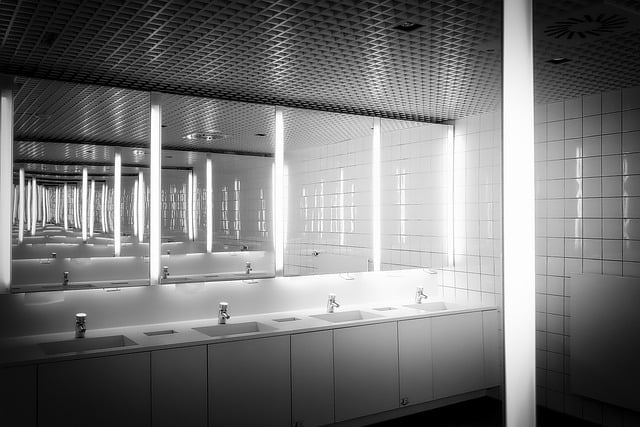
Furthermore, the availability of public toilets can also impact tourism. Tourists may only visit certain areas or attractions if they can access clean and well-maintained public toilets. This can result in lost revenue for businesses and attractions in the area.
The lack of public toilets sometimes can lead to public health concerns. For example, tourists may be forced to relieve themselves in public areas if they are still looking for a public restroom, leading to unsanitary conditions and potential health hazards.
Overall, the availability and quality of public toilets can significantly impact tourism and public perception. Governments and businesses must prioritize the maintenance and availability of public toilets to ensure a positive experience for tourists and visitors.
Regulations and Public Policy
Governmental Regulations
The regulations surrounding public toilets in Europe vary from country to country. However, one commonality across most countries is that the government regulates them. The government sets the standards for the cleanliness of the facilities and the fees charged for their use. In some countries, such as Germany, the government regulates the number of toilets available in public places, such as train stations and shopping centers. This ensures enough facilities are available to meet the needs of the public.
Standardization Across Countries
While the regulations for public toilets in Europe vary from country to country, there has been an effort to standardize the facilities across the continent. The European Committee for Standardization (CEN) has created a set of standards for public toilets, which includes guidelines for the size of the facilities, the number of bathrooms that must be available, and the materials that should be used in their construction. These standards help ensure the facilities are safe, clean, and accessible to everyone.
In addition, the European Union has passed legislation that requires public buildings, such as train stations and airports, to provide accessible toilets for people with disabilities. These toilets must meet specific standards, such as being large enough to accommodate a wheelchair and having grab bars and other safety features.

Overall, the regulations and standards for public toilets in Europe are designed to ensure that the facilities are safe, clean, and accessible to everyone. While the fees charged for their use may seem inconvenient to some, they help to ensure that the facilities are adequately maintained and that there are enough of them available to meet the needs of the public.
Alternatives to Paid Public Toilets
While paid public toilets are standard in Europe, alternatives are available for those who prefer to avoid paying. These alternatives include accessible municipal facilities, private-sector solutions, and community-driven initiatives.
Free Municipal Facilities
Many European cities offer accessible public toilets in parks, train stations, and other public areas. The local government often maintains these facilities, and they are open to the public free of charge. However, these facilities may only sometimes be available or well-maintained.
Private Sector Solutions
In addition to municipal facilities, some private businesses, such as cafes, restaurants, and hotels, offer accessible toilets to the public. While these facilities may be more comfortable and better maintained than municipal facilities, they may only be available at some times or in some locations. However, if you have the choice, choose these bathrooms as they take the idea of a clean, calming space to the next level.
Community-Driven Initiatives
Finally, some communities have taken it upon themselves to provide accessible public toilets through community-driven initiatives. These initiatives may be public toilets maintained by volunteers or community-funded public toilets. While these initiatives may not be as widespread as municipal or private sector solutions, they can be a valuable resource for those in need.
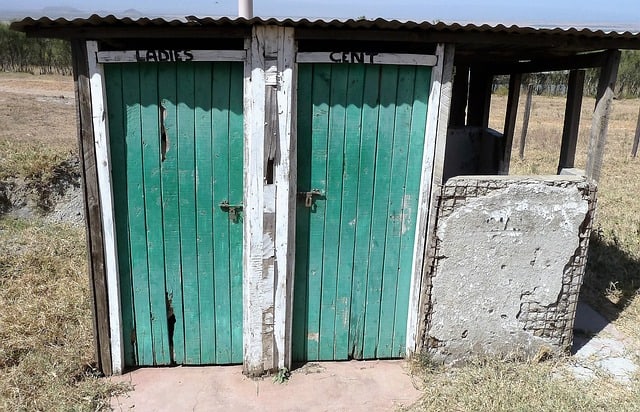
Overall, while paid public toilets are standard in Europe, alternatives are available for those who prefer not to pay. These alternatives include accessible municipal facilities, private-sector solutions, and community-driven initiatives.
The differences between European and American toilets can be significant, and it’s essential to be aware of them before embarking on a trip. This article will explore the key differences between European and American toilets, including flush performance, built-in amenities, and design.
One of the most noticeable differences between European and American toilets is their size. European toilets tend to be smaller and more compact than their American counterparts, which can be surprising for those used to larger toilets. Additionally, European toilets often feature a different flushing mechanism, such as a pull chain or button, which can take some getting used to.
Examples of a pull chain toilets:
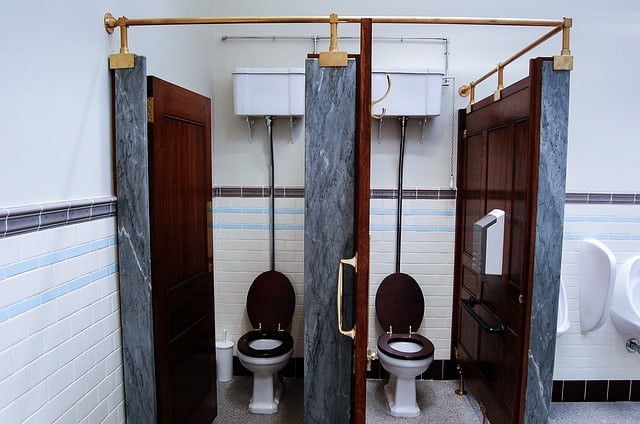
Another essential factor to consider when comparing European and American toilets is their sanitation. European toilets may have less water in the bowl than American toilets, which can lead to issues with cleanliness. However, many European toilets feature built-in bidets or other amenities that can help mitigate this issue. Understanding the differences between European and American toilets is essential in preparing for international travel.
Historical Evolution
Ancient European Sanitation
The ancient Europeans had a rudimentary system of sanitation, which involved the use of communal latrines. These restrooms were usually outside the city walls and were often nothing more than a simple pit dug in the ground. Waste was left to accumulate until the pit was complete, at which point it was covered with soil.
In ancient Rome, public toilets were a common feature of daily life. These toilets, known as “latrines”, were usually located near public baths and were used by both men and women. The restrooms were equipped with a continuous flow of water, which was used to flush waste away.
Modern Advancements
The modern European toilet has undergone significant advancements since ancient times. In the 16th century, an English courtier, Sir John Harington, invented the first flushing toilet. However, it was in the 19th century that the modern toilet became widespread.
During this period, chamber pots were commonly used as indoor facilities. However, the 19th century witnessed a significant revolution in sanitation systems, particularly in the evolution of toilets. The flush toilet was invented in 1596 but was not widespread until 1851. Before that, the “toilet” was a motley collection of communal outhouses, chamber pots, and holes in the ground.
A chamber pot:
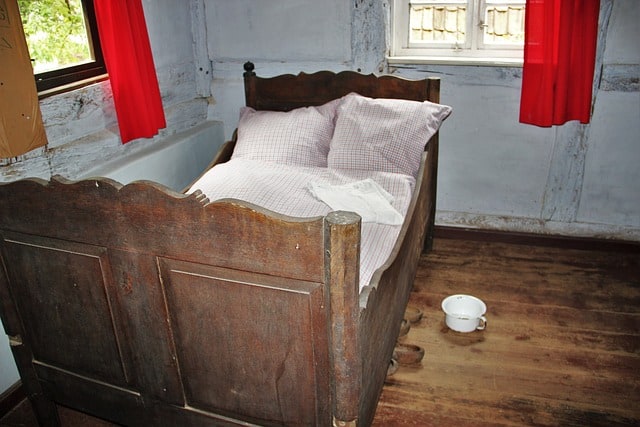
Today, the modern European toilet has a water tank, a flush mechanism, and a seat. The toilet bowl is designed to direct waste into a pipe that leads to a sewage treatment plant. The sewage treatment plant then processes the wastewater and disposes of it safely.
In conclusion, the historical evolution of the European toilet has been a long and fascinating journey. From the simple pit latrines of ancient times to the modern flushing toilets of today, the toilet has played a crucial role in the evolution of human civilization.
Design Variations
Toilets in Europe come in many designs and styles, varying from country to country. Here are some of the most common design variations:
Western European Style
Western European-style toilets are similar to those found in the United States, with a bowl and seat separate from the tank. They are typically made of porcelain and come in various colors and styles. Some Western European toilets have a dual-flush system, which allows users to choose between a full flush and a half flush, depending on the amount of waste.
Eastern European Style
Eastern European-style toilets are often called “squat toilets” because they require the user to squat over a hole in the ground. These toilets are standard in public restrooms and common in Romania, Bulgaria, and Turkey. They are often made of stainless steel and are easier to clean than Western-style toilets.
Bidets and Washlets
Bidets and washouts are common in many European countries, particularly Italy, Spain, and Portugal. A bidet is a separate fixture used to clean the genital area after using the toilet. It is typically located next to the bathroom and has a faucet and a sprayer. A washlet is a toilet seat with a built-in bidet function, allowing users to clean themselves with water after using the toilet.
Example of a modern bidet:
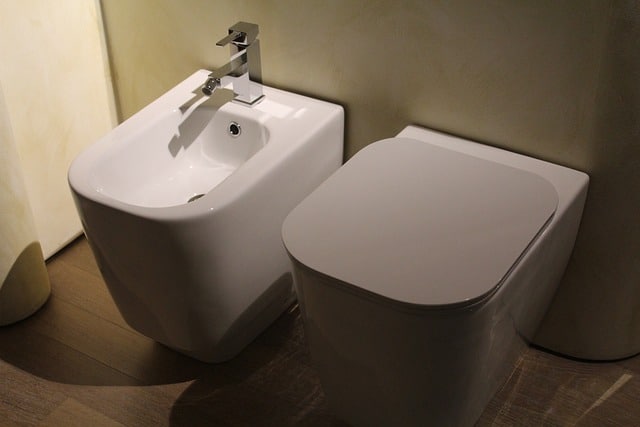
European toilets come in various designs and styles, each with unique features and benefits. Whether you prefer a Western-style toilet or a bidet, there is sure to be a design that meets your needs and preferences.
Cultural Significance
European toilets have a cultural significance deeply rooted in the continent’s history. From public restrooms to private bathroom practices, these facilities have played a crucial role in shaping the daily lives of Europeans.
Public Restrooms Etiquette
In Europe, public restrooms are commonly found in restaurants, cafes, and other public places. However, the etiquette surrounding their use can be quite different from what one might be accustomed to in other parts of the world. For instance, it is customary to pay a small fee to use public restrooms in some countries, such as Germany. In other countries, such as France, it is not uncommon for public toilets to be unisex.
Moreover, in some countries, such as Italy, bringing toilet paper is customary, as it is only sometimes provided in public restrooms. In other countries, such as the Netherlands, people are expected to clean up after themselves, as leaving a mess for the next person is considered impolite.
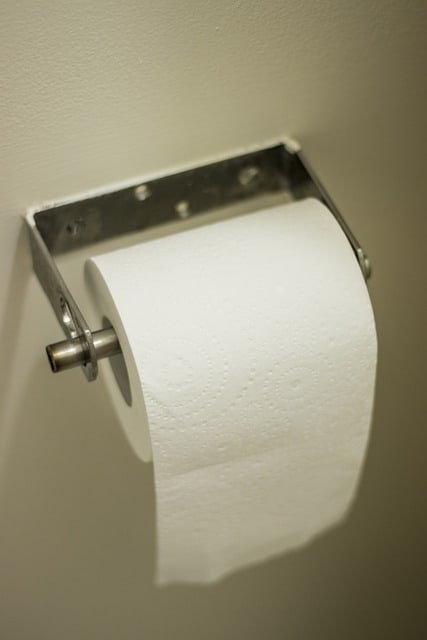
Private Bathroom Practices
In addition to public restrooms, European toilets have a significant cultural significance in the private sphere. For instance, bidets are commonly found in many European bathrooms, particularly in Italy and France. These devices are used for personal hygiene and are considered an essential part of the bathroom experience in these countries.
Additionally, many European bathrooms are designed with a separate area for the toilet, often enclosed by a door. This design allows for greater privacy and is considered a standard feature in many European homes.
Overall, European toilets have a cultural significance deeply ingrained in Europeans’ daily lives. From public restrooms to private bathroom practices, these facilities play an essential role in shaping the cultural norms and etiquette of the continent.
Technological Features
European toilets are known for their innovative and advanced technological features that enhance their functionality and user experience. This section will explore some of European toilets’ most common technical features.
Flushing Mechanisms
One of European toilets’ most significant technological features is their flushing mechanisms. Most European toilets have a dual-flush system that allows users to choose between a low-volume flush for liquid waste and a high-volume flush for solid waste. This feature helps to conserve water and reduce water bills, making European toilets more environmentally friendly and cost-effective.

Water Conservation
Water conservation is a crucial aspect of European toilet technology. Most European toilets are designed to use less water per flush than their American counterparts. This is achieved through advanced flushing mechanisms, such as pressure-assisted and vacuum-assisted flushing, which require less water to clear waste from the bowl.
In addition to these advanced flushing mechanisms, many European toilets also feature water-saving technologies such as sensor-activated flushing, which automatically flushes the toilet after use, reducing the risk of germ transmission and water waste.
Overall, European toilets are at the forefront of toilet technology, with advanced flushing mechanisms and water-saving technologies that help to reduce water consumption and promote environmental sustainability.
Hygiene Standards
Regarding hygiene standards, European toilets are generally well-maintained and clean. Public restrooms are usually cleaned several times a day, and many have strict cleaning protocols to ensure they remain hygienic and pleasant to use.
Cleaning Protocols
Cleaning protocols for public restrooms in Europe often involve using strong disinfectants and antibacterial agents. For example, in some countries, toilets are cleaned with bleach and water, which helps to kill germs and prevent the spread of disease. In addition, many public restrooms have cleaning schedules posted so visitors can see when the toilet was last cleaned.
Antibacterial Materials
In addition to cleaning protocols, many European toilets are made from antibacterial materials. For example, some toilets are made from a particular ceramic type infused with silver ions. Silver is known for its antibacterial properties, which can help keep the toilet bowl clean and free from harmful bacteria.
European toilets are generally well-maintained and clean, with strict cleaning protocols and antibacterial materials to ensure they remain hygienic and pleasant.

Professional Installation
When it comes to installing a European toilet, it is recommended to hire a professional plumber. A licensed plumber can ensure that the installation is done correctly and safely. The installation process can vary depending on the type of European toilet being installed, so it is essential to hire an experienced plumber.
DIY Considerations
If you are considering installing a European toilet, there are a few things to remember. First, make sure you have the necessary tools and equipment. This may include a wrench, screwdriver, plunger, and toilet auger. Second, carefully read the installation instructions that come with the toilet. If you are uncomfortable with the installation process, it is best to hire a professional plumber.
Repair and Upkeep
Maintaining a European toilet is similar to keeping a traditional toilet. Regular cleaning and upkeep are essential to ensure the toilet functions appropriately. If you notice any issues with your European toilet, such as clogs or leaks, it is necessary to address them immediately. Sometimes, you can fix the issue using a plunger or toilet auger. If the problem is more serious, it is recommended to hire a professional plumber to make the necessary repairs.
In addition to regular cleaning and upkeep, it is essential to use the proper cleaning products. Harsh chemicals can damage the toilet and cause it to deteriorate over time. It is recommended to use mild cleaning products and avoid using abrasive materials when cleaning the bathroom.
Proper installation and maintenance are essential to ensure that your European toilet functions appropriately and lasts many years. Whether you hire a professional plumber or install the toilet yourself, following the manufacturer’s instructions and taking the necessary steps to keep the bathroom in good condition is crucial.
Accessibility and Inclusivity
Disability-Friendly Designs
European toilets are designed to accommodate people with disabilities. Most public restrooms have at least one more oversized stall equipped with grab bars to assist individuals with mobility impairments. Some toilets also have features such as raised seats, automatic flushing mechanisms, and emergency pull cords to further aid those with disabilities. These designs make it easier for everyone to access and use the facilities, regardless of their physical abilities.
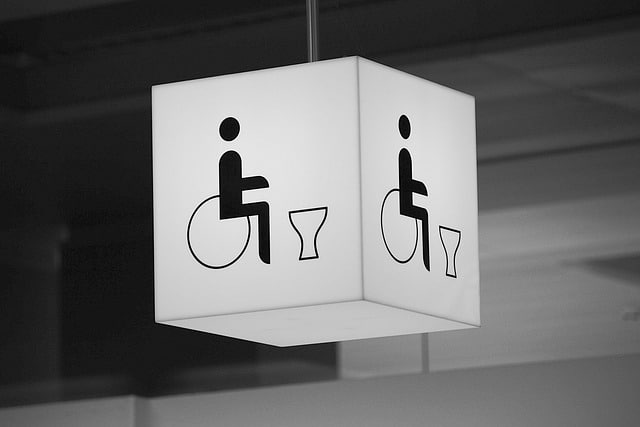
Gender-Neutral Facilities
Gender-neutral toilets are becoming increasingly popular in Europe. These facilities are designed to be inclusive of all genders and can be used by anyone regardless of gender identity. This is an essential step towards creating a more inclusive and welcoming environment.
Gender-neutral facilities can also benefit families with young children who may need assistance from a parent or caregiver of a different gender. By providing gender-neutral toilets, European countries promote inclusivity and create a more welcoming environment for everyone.
Overall, European toilets are designed to be accessible and inclusive for everyone. Disability-friendly designs and gender-neutral facilities exemplify how European countries promote inclusivity and create a more welcoming environment for all.
Environmental Impact
Toilets are a necessary part of life but can also significantly impact the environment. In Europe, most toilets are connected to a sewage system, meaning that waste is transported to a wastewater treatment plant. These plants remove harmful substances and pathogens from the water before releasing them into the environment.

However, not all waste is treated equally. Some toilets use more water than others, producing more waste that needs to be treated. Additionally, some toilets are connected to outdated or poorly maintained sewage systems, which can result in untreated waste being released into the environment.
To address these issues, many European countries have implemented regulations that require toilets to meet specific water efficiency standards. These standards help to reduce the amount of waste that is produced, which in turn reduces the burden on wastewater treatment plants.
Sustainable Practices
In addition to water efficiency standards, other sustainable practices can be implemented to reduce the environmental impact of toilets. For example, some toilets use composting systems to treat waste, which can be used as fertilizer for plants.
Another sustainable practice is the use of greywater systems. Greywater is wastewater from sinks, showers, and washing machines. This water can be treated and reused for non-potable purposes, such as flushing toilets.
Overall, there are many ways to reduce the environmental impact of toilets in Europe. By implementing water efficiency standards and sustainable practices, it is possible to minimize the amount of waste produced and ensure that it is adequately treated.
Frequently Asked Questions
How does the payment system for public toilets in European countries work?

The payment system for public toilets in Europe varies by country. Some countries use a coin-operated system, while others use a ticket or token system. In some cases, payment is accepted through an app or card. The restroom cost varies by location, ranging from 50 cents to 2 euros, on the topic of money. Knoweseeker.com is a great place to go if you want general money tips.
What are the differences in restroom facilities between Europe and the USA?
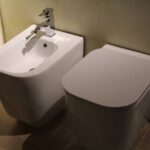
Restroom facilities in Europe tend to be smaller and more compact than those in the USA. Additionally, European restrooms often have less privacy and may be gender-neutral. In contrast, restrooms in the USA are typically more extensive and spacious, with separate facilities for men and women.
Is it common for public restrooms in Europe to be gender-neutral?

Gender-neutral restrooms are becoming more common in Europe, particularly in progressive cities. However, traditional gendered restrooms are still prevalent in many areas.
Can you find accessible public toilets in European cities, or are most pay-to-use?

While pay-to-use restrooms are common in Europe, finding accessible public toilets in many cities is still possible. Shopping malls, department stores, and libraries often have accessible restrooms available to the public.
How do the costs and cleanliness of European pay toilets compare to free alternatives?

European pay toilets are generally well-maintained and clean, as the fees collected help cover maintenance and cleaning costs. However, free alternatives may be less well-maintained, and cleanliness can vary depending on the location.
Closing Thoughts
Having traveled around Europe and used their toilets along the way, I like the efficiency with which they run. Along with being easy to use, accessible, and, most importantly, clean. In other countries, especially the UK, Public toilets are considered dirty places to use as an absolute last resort. In mainland Europe, it is a very different situation. Toilets are seen as lovely places that are accessible to all.
Looking For More? Start Here:
- 10 Austrian Cities To Explore On A Budget
- 15 Money Saving Tips For How To Plan A Trip To Europe
- 20 Plus Things to Do in Cyprus
- Italy’s Secret to Happiness
- Kahler Luxembourg – The Farming Village With Graffiti Murals
- Laguna Thermal Resort & Spa, Turkey
- Romania – The Best Tourist Attractions
- Walker’s Haute Route: The Best Hiking Guide
- Useldange Castle, Luxembourg
- Vienna, Austria – A Guide to the Best Things to Do
We participate in the Amazon Services LLC Associates Program, an affiliate advertising program designed to provide a means for us to earn fees by linking to Amazon.com and affiliated sites.
Brit On The Move™ Travel Resources
Ready to book your next trip? Use these resources that work:
Was the flight canceled or delayed? Find out if you are eligible for compensation with AirHelp.
- Book your Hotel: Find the best prices; use Booking.com
- Find Apartment Rentals: You will find the best prices on apartment rentals with Booking.com’s Apartment Finder.
- Travel Insurance: Don’t leave home without it. View our suggestions to help you decide which travel insurance is for you: Travel Insurance Guide.
- Want to earn tons of points and make your next trip accessible? Check out our recommendations for Travel Credit Cards.
- Want To Take A Volunteer Vacation or a Working Holiday? Check out the complete guide to how here!
- Want to Shop For Travel Accessories? Check out our Travel Shop.
Need more help planning your trip? Visit our Resources Page, which highlights the great companies we use for traveling.
